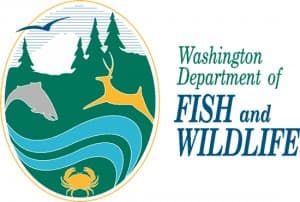Washington DFW Says: Delay Pruning to Help Wildlife
OutdoorHub 10.08.12

Fall yard and garden clean-up too often includes pruning trees, shrubs and other plants that wildlife may depend on for food and cover.
Washington Department of Fish and Wildlife (WDFW) staff recommend delaying that task to help wildlife during the more difficult fall and winter season.
“If pruning is necessary, the most wildlife-friendly time to make those cuts is late winter,” said WDFW biologist Russell Link. “Right now many birds and other wildlife species are using the seeds and fruits of hawthorn, maple, ninebark, mountain-ash, Oregon-grape, evergreen huckleberry and other species.”
Link advises leaving dried foliage, seed heads and some grasses uncut, too, as many of these annuals and perennials keep their seeds well into winter, or harbor insects that many birds use throughout the winter.
“If you clean and prune in fall,” Link said, “try leaving cut vegetation around the plant as a mulch and to hold seeds and over-wintering invertebrate eggs and larvae. And consider adding cut branches and twigs to an out-of-the-way brush pile which creates its own habitat..
Controlling invasive non-native vegetation like Himalyan blackberry is another matter. Heavy pruning, outright removal, or removal and replacement with a locally-adapted native species, is recommended, and fall is a great time to plant.
Link also notes that some homeowners don’t get the gardening bug until spring is in full-bloom. Pruning trees and shrubs in spring is the least wildlife-friendly, as it can be disastrous for birds and other wildlife that are setting up territories, nesting, or rearing young.
“Timing is everything,” he said. “Pruning trees and shrubs is best for the plant when it’s shutting down for the season. Delaying that traditional fall chore until late winter is best for wildlife.”
Link’s book “Landscaping for Wildlife in the Pacific Northwest” has more information and is available at http://wdfw.wa.gov/living/book/.

